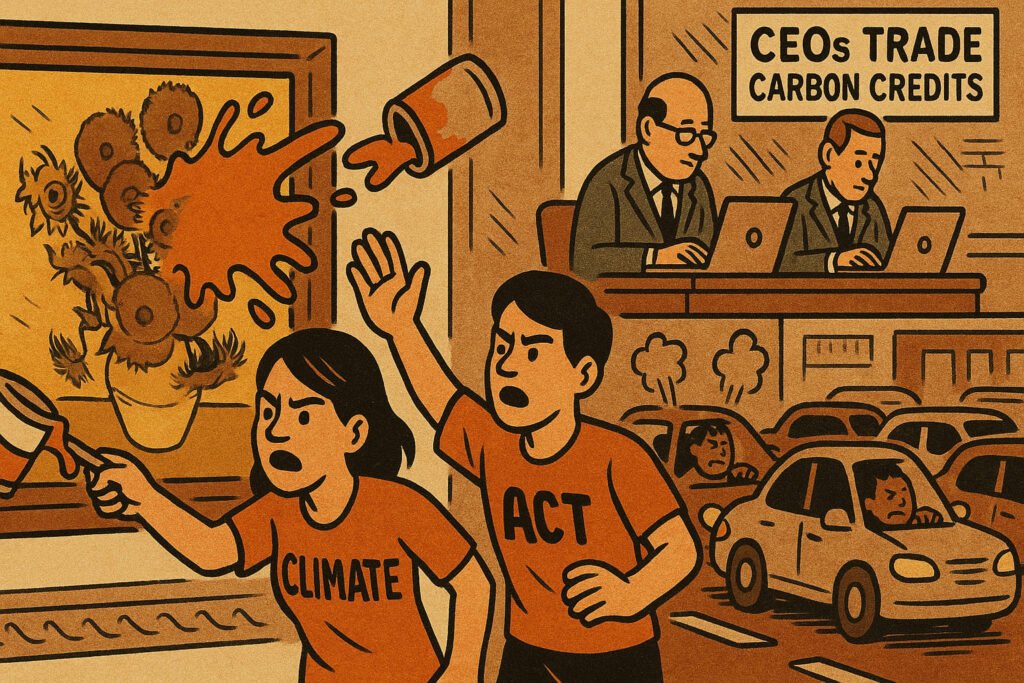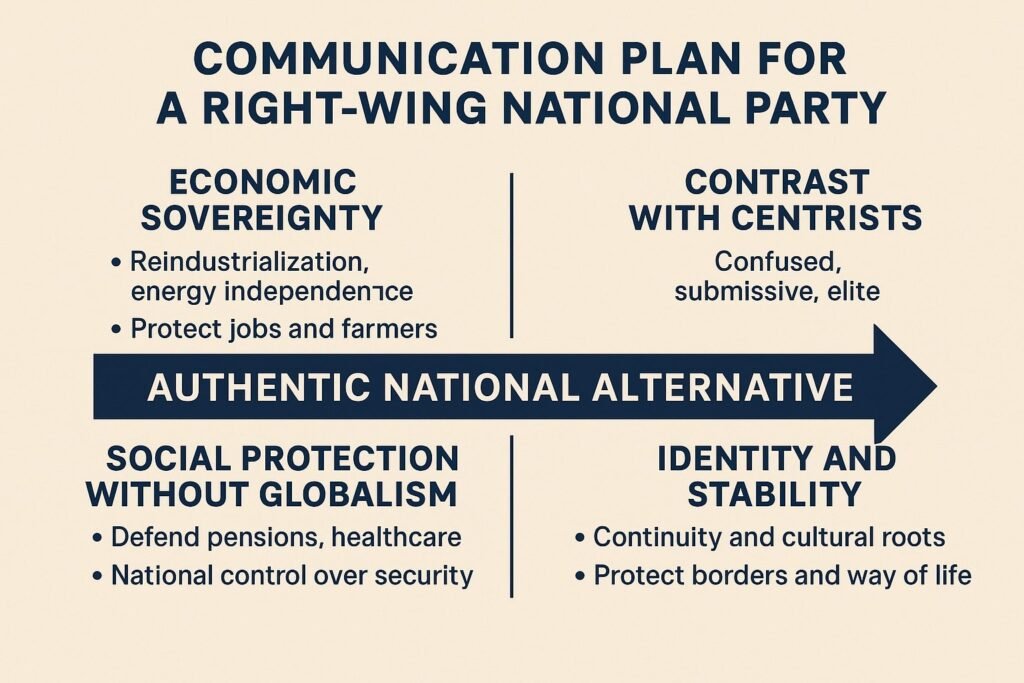Environmental Activism – When Green Turns Red
Once upon a time, environmental activism was about saving forests, protecting species, and cleaning rivers. Now? It’s throwing soup at priceless paintings, glueing yourself to motorways, and shouting at ordinary people trying to get to work.
Somewhere between “reduce pollution” and “ban fossil fuels,” the green movement turned into a circus — funded by NGOs, cheered by elites, and paid for by the public.
Table of contents
Buzzword Breakdown
- Climate Justice → Fighting the weather with slogans about inequality.
- Net Zero → Bankrupt yourself today, salvation tomorrow.
- Direct Action → Annoy commuters, ignore China.
- System Change → Translation: more bureaucracy, more taxes.
What Environmental Activism Really Means
Modern environmental activism isn’t about planting trees or cutting waste. It’s about politicising the weather and turning it into a permanent moral emergency.
If you question their policies, you’re a “denier.” If you suggest balance, you’re “dangerous.” The cause isn’t debate — it’s obedience.
👉 For the ideology behind this, see: Climate Justice – When Saving the Planet Becomes About Power.
How It Works in Practice
- Attacks on Art → Activists throw soup on Van Gogh or glue themselves to masterpieces. Culture becomes collateral damage for a photo op.
- Attacks on People → Ordinary commuters trapped in traffic as activists block roads, sometimes even assaulting drivers who resist.
- Corporate Stunts → Storming oil conferences while sipping lattes flown in from abroad.
- Political Capture → Lobbying governments into costly Net Zero pledges while the biggest polluters keep growing.
The pattern is simple: punish ordinary people while elites clap from their private jets.
The Business of Green Rage
Environmental activism is an industry.
- NGOs rake in millions in donations.
- Governments funnel taxpayer cash into “green initiatives.”
- Corporations slap “sustainable” labels on sweatshop goods.
- Media amplifies every stunt, ensuring outrage clicks for everyone involved.
Being “green” is no longer about the planet. It’s about the brand.
The Irony
Environmental activists say they’re saving the planet. But soup on paintings doesn’t cut emissions. Blocking a motorway doesn’t cool the climate. What it does do is alienate ordinary people while giving elites another excuse to tighten control.
The planet isn’t their main target. You are.
Why It Matters
- Disrupts daily life — ordinary people pay the price.
- Protects elites — the real polluters carry on.
- Shifts politics — from practical solutions to moral theatre.
- Turns activism into spectacle — rage as performance art.
Conclusion
Environmental activism once meant protecting nature. Today, it means attacking culture, commuters, and common sense.
It’s less about saving the Earth and more about staging outrage. And like every other woke cause, it keeps the public distracted while the elites cash in on carbon credits and green subsidies.
The climate may be warming, but the activism is stone-cold cynical.
FAQ
What is modern environmental activism?
Protests, stunts, and campaigns that focus more on visibility and ideology than practical solutions.
Why attack art and culture?
Because it guarantees media attention. The paintings survive — the headlines don’t.
Who funds these groups?
Often NGOs, government grants, or private donors with political agendas. See: [NGOs & Activism – The Business of Selling Justice].
Does activism actually cut emissions?
No. It mostly disrupts daily life while emissions rise elsewhere.
Why does environmental activism matter politically?
It justifies sweeping regulations and new taxes in the name of “climate justice.” See: [Politics & Identity Activism – How Laws Bend Under Pressure].



